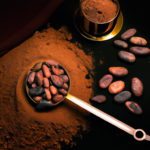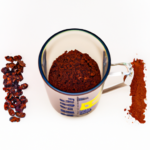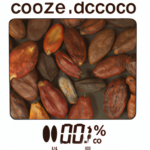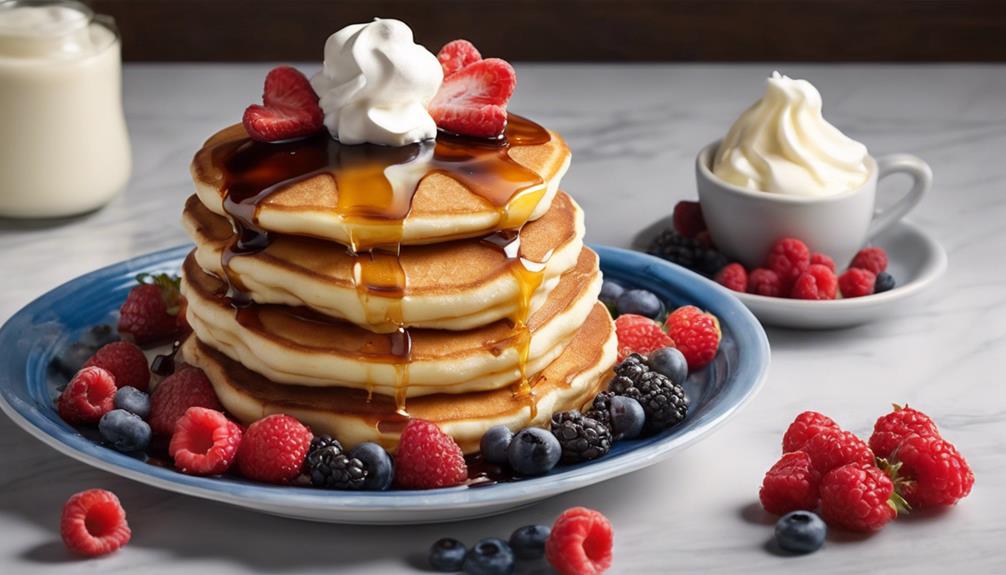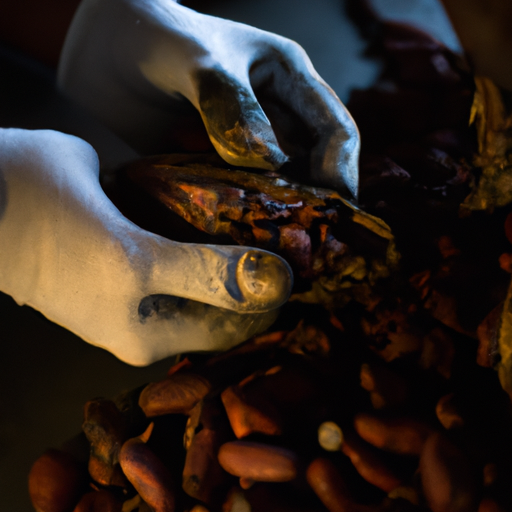As a chocolate lover, I was interested to learn that a tablespoon of raw cacao has more caffeine than a cup of green tea. Let’s explore the caffeine content in raw cacao and how it compares to other sources in this article.
First, let’s understand what raw cacao actually is. Raw cacao is the purest form of chocolate, made from the seeds of the cacao tree. It is minimally processed and retains all the natural goodness, including caffeine.
We will also discuss the effects of caffeine on the body and factors that influence our sensitivity to it. Additionally, I will share some tips on how to incorporate raw cacao into your diet and address concerns about caffeine and sleep, as well as withdrawal and dependency.
So, grab a cup of your favorite hot beverage and join me in exploring the caffeine content in raw cacao. Let’s uncover the truth behind this beloved treat and make informed choices about enjoying it in moderation.
Key Takeaways
- Raw cacao has an average of 12mg of caffeine per tablespoon, which is higher compared to dark chocolate or cocoa powder.
- Excessive consumption of raw cacao can lead to caffeine overdose symptoms and disrupt sleep patterns.
- It is recommended to consume raw cacao earlier in the day to allow for caffeine metabolism and to avoid disrupting sleep.
- Gradually reducing caffeine intake can minimize caffeine withdrawal symptoms such as headaches, fatigue, and difficulty concentrating.
What is Raw Cacao?
Raw cacao is like a burst of decadent chocolate, rich and velvety, enticing the senses with its intoxicating aroma. It is the purest form of chocolate available, made from the seeds of the cacao tree.
Raw cacao is known for its numerous health benefits. It is packed with antioxidants, which help fight off free radicals and protect against cell damage. Additionally, raw cacao contains essential minerals such as magnesium, iron, and potassium. These minerals support overall health and well-being.
Raw cacao can be used in various recipes, including smoothies, desserts, and even savory dishes. Its intense flavor adds depth and richness to any dish.
Now, let’s delve into the caffeine content in raw cacao to understand its potential effects.
Caffeine Content in Raw Cacao
The average caffeine content per tablespoon of raw cacao is approximately 12 milligrams.
However, it is important to note that this value can vary depending on several factors.
Factors that can affect the caffeine levels in raw cacao include the variety of cacao bean used, the processing method, and the origin of the cacao.
Average caffeine content per tablespoon
On average, there’s an impressive amount of caffeine in just one tablespoon of raw cacao. The caffeine content can vary depending on the brand of raw cacao and whether it has been roasted or not. To give you an idea of the average caffeine levels in different brands of raw cacao, here is a table showcasing the caffeine content per tablespoon:
| Brand | Caffeine Content (per tablespoon) |
|---|---|
| A | 12 mg |
| B | 15 mg |
| C | 18 mg |
| D | 10 mg |
| E | 13 mg |
Roasting raw cacao can reduce its caffeine content by up to 20%. Factors that can affect caffeine levels in raw cacao include the origin of the beans, processing methods, and storage conditions. Understanding these factors can help us better appreciate the complexity of caffeine content in raw cacao. Let’s explore these factors further in the next section.
Factors that can affect caffeine levels in raw cacao
To better understand the factors that can impact caffeine levels in raw cacao, imagine a complex web of variables that come together to determine the amount of energy-inducing compounds present in each batch.
These factors can include the variety of cacao bean used, the soil conditions in which it was grown, and the climate of the region.
Additionally, the processing methods employed can have a significant effect on caffeine levels. For example, the fermentation and roasting processes can alter the concentration of caffeine in the final product. Furthermore, the duration and temperature of the roasting process can also influence caffeine content.
Lastly, the way the cacao beans are ground and transformed into raw cacao powder can affect the release and preservation of caffeine.
Understanding these factors is crucial when considering the caffeine content in raw cacao.
Moving forward, let’s explore how raw cacao compares to other sources of caffeine.
Comparing Raw Cacao to Other Sources of Caffeine
Imagine you’re at a café, sipping on a cup of coffee, when suddenly you realize that a tablespoon of raw cacao contains the same amount of caffeine as that steaming cup of joe.
It’s fascinating to compare the caffeine content in coffee to that in raw cacao. Both coffee and raw cacao are natural sources of caffeine, providing a similar energy boost.
However, consuming raw cacao has additional benefits. Raw cacao is rich in antioxidants, which can support cardiovascular health and enhance brain function. Additionally, raw cacao contains theobromine, a compound that can improve mood and promote relaxation.
So, if you’re looking for an alternative to coffee for a natural energy boost, raw cacao could be a great option.
Now, let’s explore the effects of caffeine on the body.
Effects of Caffeine on the Body
Caffeine is a stimulant that affects the central nervous system. It increases alertness and reduces fatigue. It is found in various beverages and foods like coffee, tea, and raw cacao.
Moderate caffeine consumption has been associated with potential health benefits. These benefits include improved cognitive function and reduced risk of certain diseases.
However, excessive intake of caffeine can lead to adverse effects. These effects include sleep disturbances, increased heart rate, and addiction. It is important to understand the potential benefits and risks of consuming caffeine. This understanding will help individuals make informed choices about its consumption.
Stimulant properties of caffeine
Raw cacao contains a significant amount of caffeine, which gives it its stimulating properties. Caffeine is a natural stimulant that affects the central nervous system, increasing alertness and reducing fatigue.
When consumed, caffeine is rapidly absorbed into the bloodstream and distributed throughout the body. It acts by blocking adenosine receptors in the brain, preventing the onset of drowsiness and promoting wakefulness.
The stimulant effects of caffeine can vary depending on individual metabolism. Some people may experience increased energy and improved focus, while others may feel jittery or anxious.
However, it is important to note that excessive consumption of caffeine can lead to negative effects such as insomnia, digestive issues, and increased heart rate.
Moving forward, let’s explore the potential health benefits and risks of consuming caffeine.
Potential health benefits and risks of consuming caffeine
Moving on to the potential health benefits and risks of consuming caffeine, it is important to note that moderation is key. While caffeine can provide a temporary energy boost and increase alertness, excessive consumption can lead to negative effects such as insomnia, restlessness, and even addiction. On the other hand, studies have shown that caffeine intake, in moderate amounts, may have some potential benefits, such as improved cognitive function, increased metabolism, and enhanced athletic performance. However, it is crucial to consider individual differences in caffeine sensitivity and tolerance. To further understand this, let’s take a look at the factors that influence caffeine sensitivity. These factors can help determine how each person responds to caffeine and why some individuals may experience stronger effects than others.
Factors that Influence Caffeine Sensitivity
When it comes to your caffeine sensitivity, there’s one crucial factor that can make all the difference: your caffeine tolerance. This factor can vary greatly from person to person. Some individuals can consume large amounts of caffeine without experiencing any negative effects, while others may feel jittery or anxious with just a small dose.
This difference in tolerance is influenced by a variety of factors, including genetic factors. Certain genes can affect how quickly your body metabolizes caffeine, leading to differences in how sensitive you are to its effects.
Understanding your own caffeine tolerance can help you make informed decisions about your caffeine consumption and prevent any potential negative health effects.
Now, let’s explore how to incorporate raw cacao into your diet, a delicious alternative to traditional caffeine sources.
How to Incorporate Raw Cacao into Your Diet
When it comes to incorporating raw cacao into your diet, there are many healthy recipes that make use of this ingredient. From smoothies to energy balls, there are endless possibilities to explore.
It’s important to note that the recommended daily intake of raw cacao is about 1-2 tablespoons. Consuming too much can lead to negative effects due to its caffeine content.
Healthy recipes using raw cacao
For those looking to indulge in healthy treats, there are plenty of delicious recipes that incorporate the rich and flavorful raw cacao. Here are four nutritious and satisfying options to try:
-
Raw Cacao Energy Balls: These bite-sized treats are packed with antioxidants and provide a natural energy boost.
-
Raw Cacao Smoothie: Blend raw cacao powder with bananas, almond milk, and a touch of honey for a creamy and nutritious treat.
-
Raw Cacao Chia Pudding: Mix raw cacao powder with chia seeds, almond milk, and a sweetener of your choice for a nutrient-dense and filling dessert.
-
Raw Cacao Avocado Mousse: Combine ripe avocados, raw cacao powder, and a sweetener to create a velvety and indulgent mousse that is also rich in healthy fats.
These recipes not only satisfy your sweet tooth, but they also provide numerous nutritional benefits.
Now, let’s explore the recommended daily intake of raw cacao.
Recommended daily intake of raw cacao
To incorporate raw cacao into your daily routine, it’s recommended to enjoy it in moderation and as part of a balanced diet. The recommended daily intake of raw cacao varies depending on factors such as age, health status, and personal preferences. However, most experts suggest consuming no more than 1 to 2 tablespoons of raw cacao per day.
Raw cacao is rich in antioxidants, flavonoids, and minerals like magnesium and iron, which contribute to its potential health benefits. These include improved heart health, enhanced mood, and increased cognitive function.
Incorporating raw cacao into your diet can be as simple as adding it to smoothies, oatmeal, or homemade energy balls.
Now, let’s explore the relationship between caffeine and sleep.
Caffeine and Sleep
Caffeine can have a significant impact on the quality of sleep. Consuming caffeine, such as the caffeine found in raw cacao, close to bedtime can disrupt sleep patterns and make it difficult to fall asleep.
To avoid this, it is important to consume raw cacao or any caffeinated products earlier in the day and to be mindful of the amount of caffeine consumed overall.
Effects of caffeine on sleep quality
Research suggests that consuming caffeine, such as that found in raw cacao, can have negative effects on sleep quality. It has been found that caffeine can interfere with the sleep-wake cycle, making it harder to fall asleep and stay asleep. This is because caffeine blocks the action of adenosine, a neurotransmitter that promotes sleep.
Additionally, caffeine can also affect the quality of sleep by reducing the amount of deep sleep and REM sleep experienced. These effects can have long-term consequences on cognitive function and overall health.
To consume raw cacao without disrupting sleep patterns, it is recommended to avoid consuming it close to bedtime and to limit overall caffeine intake throughout the day. This will help ensure a better night’s sleep and promote optimal health.
Tips for consuming raw cacao without disrupting sleep patterns
After learning about the negative effects of caffeine on sleep quality, I wanted to find a way to still enjoy raw cacao without disrupting my sleep patterns. Raw cacao contains caffeine, which can affect our cognitive function.
To mitigate the potential negative impact, it is recommended to consume raw cacao earlier in the day, preferably before noon. This allows your body enough time to metabolize the caffeine before bedtime.
Additionally, it is important to be mindful of the quantity of raw cacao consumed as it varies in caffeine content. It is suggested to start with smaller amounts and see how your body responds.
Personally, I find that enjoying raw cacao in the morning as part of my breakfast routine gives me the energy boost I need without interfering with my sleep later on.
With this in mind, let’s delve into the next section about caffeine withdrawal and dependency.
Caffeine Withdrawal and Dependency
Experiencing withdrawal symptoms from caffeine can be a challenging and emotionally exhausting process. When we consume caffeine regularly, our bodies develop a tolerance to its effects, meaning we need more caffeine to achieve the same level of alertness.
However, when we suddenly stop consuming caffeine, our bodies can go through withdrawal, leading to symptoms such as headaches, fatigue, irritability, and difficulty concentrating. These symptoms can last for a few days or even weeks, depending on the individual’s caffeine dependency.
It is important to note that caffeine withdrawal is a recognized medical condition and should be taken seriously. To minimize the discomfort, it is recommended to gradually reduce caffeine intake rather than quitting abruptly.
In conclusion, enjoying raw cacao in moderation can be a wonderful way to savor its unique flavors and potential health benefits.
Conclusion: Enjoying Raw Cacao in Moderation
In conclusion, the key takeaways on caffeine content in raw cacao are:
-
Raw cacao contains a moderate amount of caffeine compared to other sources like coffee or tea.
-
It is important to be mindful of this caffeine content and consume raw cacao in moderation.
-
This is especially important if you are sensitive to caffeine or trying to limit your intake.
Tips for incorporating raw cacao into a balanced and healthy lifestyle include:
-
Using it as a flavorful addition to smoothies, desserts, or homemade energy bars.
-
Being aware of the other ingredients in your recipes to ensure overall nutritional balance.
Key takeaways on caffeine content in raw cacao
One surprising fact about raw cacao is that it packs a powerful caffeine punch per tablespoon. If you have a high caffeine sensitivity, it’s important to be mindful of your intake. Here are three key takeaways on the caffeine content in raw cacao:
-
Cacao beans naturally contain caffeine, with an average of 12 milligrams per tablespoon. This amount can vary depending on the specific bean and processing method.
-
Raw cacao powder has a higher caffeine content compared to other forms of chocolate, such as dark chocolate or cocoa powder.
-
Consuming excessive amounts of raw cacao can lead to symptoms of caffeine overdose, including restlessness, increased heart rate, and difficulty sleeping.
Knowing the caffeine content in raw cacao can help you incorporate it into your healthy recipes while being aware of your caffeine intake. Now, let’s explore some tips for incorporating raw cacao into a balanced and healthy lifestyle.
Tips for incorporating raw cacao into a balanced and healthy lifestyle
If you’re looking to spice up your healthy lifestyle, incorporating raw cacao can be a bittersweet indulgence. Raw cacao is not only delicious but also packed with health benefits.
There are various ways to include raw cacao into your diet, such as adding it to smoothies, oatmeal, or even baking it into healthy treats. Raw cacao recipes are widely available and offer a range of options to suit different tastes and preferences.
When it comes to the health benefits of raw cacao, it is rich in antioxidants, which can help protect against oxidative stress and reduce the risk of chronic diseases. Raw cacao also contains flavonoids, which have been shown to have anti-inflammatory properties and may support heart health. Additionally, raw cacao is a good source of minerals like magnesium, iron, and zinc.
Incorporating raw cacao into a balanced and healthy lifestyle can be a delicious way to boost your overall well-being. So go ahead and explore the world of raw cacao recipes and enjoy the numerous health benefits it has to offer.
Frequently Asked Questions
Does the caffeine content in raw cacao vary depending on the brand or source?
Yes, the caffeine content in raw cacao can vary depending on the brand or source. Different brands may have different levels of caffeine due to variations in the cacao beans used and processing methods.
Can consuming raw cacao in the evening affect sleep patterns?
Consuming raw cacao in the evening can potentially affect sleep patterns due to its caffeine content. However, it may aid in weight loss and improve mood and anxiety levels.
Are there any potential side effects of consuming raw cacao in high amounts?
Consuming high amounts of raw cacao may have potential health risks and long-term effects. These can include digestive issues, increased heart rate, and potential interactions with medications. It is important to consume raw cacao in moderation.
Can raw cacao be used as a substitute for coffee or energy drinks?
Raw cacao can be a natural alternative to energy drinks and coffee. It provides a longer lasting energy boost compared to coffee. However, the exact amount of caffeine per tablespoon of raw cacao may vary.
Is there a recommended daily limit for consuming raw cacao to avoid negative health effects?
There is a recommended daily intake of raw cacao to avoid negative health effects. Excessive consumption may lead to health risks such as increased heart rate, insomnia, and anxiety.
How Can I Calculate the Caffeine Content in a Teaspoon of Raw Cacao?
To calculate the caffeine content in a teaspoon of raw cacao, you can use the formula: caffeine content (in mg) = 12 * grams of raw cacao. For example, if you have 5 grams of raw cacao, the caffeine content would be 60 mg.
Conclusion
In conclusion, raw cacao can be a great addition to a balanced diet. Its caffeine content, while lower than that of coffee or tea, can still provide a natural energy boost.
Interestingly, did you know that one tablespoon of raw cacao contains approximately 12 milligrams of caffeine? This statistic highlights the moderate caffeine content of raw cacao, making it a suitable alternative for those looking to reduce their caffeine intake.
Remember, moderation is key when enjoying raw cacao, as with any food or beverage.




